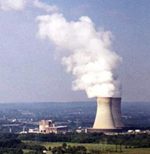Beta Analytic described how ASTM D6866 can determine the biomass content of greenhouse gas emissions during the First International Greenhouse Gas Measurement Symposium held in San Francisco, California, from March 22 to March 25, 2009. The symposium was presented by the Air & Waste Management Association in cooperation with the U.S. Environmental Protection Agency.
The First International Greenhouse Gas Measurement Symposium gave experts and industries the venue to talk about the current status of greenhouse gas measurement methods and the technical problems plaguing monitoring systems from the local up to the international level.

ASTM D6866 is the most accurate analytical method available today that can easily quantify the biomass percentage in gases. This standard created by the American Society for Testing and Materials, at the request of the U.S. Department of Agriculture, encompasses the test methods for determining the biobased content of solid, liquid, or gaseous samples using radiocarbon analysis.
Radiocarbon dating can easily distinguish fossil-based inputs from biomass through any given sample’s carbon 14 content. This weakly radioactive carbon isotope is ubiquitous in all living things but gradually decays after an organism’s death such that none is left after 50,000 years. Fossil-derived materials no longer have carbon 14 while biomass-derived ones still do.
ASTM D6866 is a well-validated method that has found its way in many GHG reporting protocols. This standard has been incorporated in the mandatory reporting requirements of California’s AB32, Western Climate Initiative, and The Climate Registry.
The ASTM D6866 is not only applicable for renewable carbon testing, but it has also found an application for quantifying the biomass content of bioplastics and biofuels. In fact, its European equivalent is used to monitor refuse-derived fuels for the European Commission’s Emission Trading Scheme.
The EU-ETS also allows the use of ASTM D6866 for monitoring various types of heterogeneous fuels. The Australian government has recommended the use of ASTM D6866 for testing the biobased content of blended fuels. The Renewable Obligation Certificate program in the UK is also considering this method for monitoring biomass energy production.
Industries that benefit from the use of ASTM D6866 include the waste-to-energy (energy-from-waste) industry, electrical plants, coal co-firing plants, as well as steel and cement manufacturers.
Energy & Environment Conference (EUEC)
3rd Global Alternative Fuels Conference for Cement and Lime